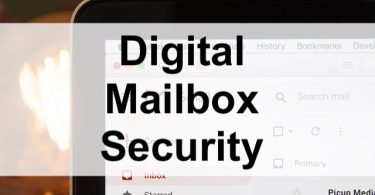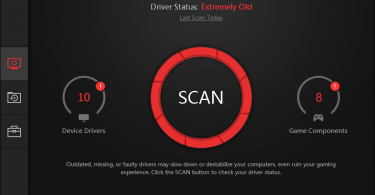Wondering what to do to protect your personal data from identity theft after a data breach? Read on!
We share personal information with companies for various reasons, such as checking into a hotel, paying for takeout at a restaurant, or collecting rewards at the local shop. If you’re like everyone else, you leave trails of data wherever you go.
At times, companies experience security incidents that can lead to a breach of confidentiality, availability, or integrity. If an organization has lost your personal data, do everything within your means to protect yourself. Your sensitive information has been leaked, so it can lead to identity theft.
Identity thefts are increasing each passing day. Your data could get sold on the dark web. Hackers need to steal a lot of information to make a profit. This could include your name, address, credit card details, and your passwords. The buyers can use this information for their own criminal purposes. For example, malicious actors can use your credit card or take loans in your name. If attackers get access to very sensitive information, they can also extort you.

https://unsplash.com/photos/npxXWgQ33ZQ
Examples Of Data Breaches Over the Past Years
The volume of data is exploding, mainly driven by private consumers. Data breaches, when they occur, affect millions of people at a time, according to the experts at Data Breach Claims. It’s expected that cybercrime will continue to grow as technology becomes omnipresent. Threat actors are coming up with new ways to access databases full of sensitive information. If you’re curious to see some examples of recent data breaches, read ahead.
The 2021 Facebook Data Breach
In March 2021, cybercriminals managed to scrape the social media platform due to a vulnerability that was patched in 2019. The personal information of roughly 20% of all accounts was leaked online. Personal data included Facebook IDs, bios, birth dates, full names, and email addresses. The exposed data included the personal information of users from 106 countries. The easiest way to boost security is to change your password every now and then.
The Syniverse Hack
Syniverse forms an important part of the global telecommunications infrastructure. It counts Verizon, AT&T, and T-mobile as some of its clients. The data breach that took place in 2021 divulged countless text messages, not to mention cell phone users’ data. Syniverse wasn’t even aware of unauthorized access to its operational and information technology systems. Many argue that hackers had been in the system for years.
The Shields Health Care Group Breach
Approximately 2 million people were affected by the Shields Health Care Group data breach. Threat actors were able to get their hands on personal medical data like names, social security numbers, and insurance information, to name a few. A class-action lawsuit was filed over the cybersecurity incident. The plaintiffs say the defendant should have been aware of the risk of a data breach.
Simple Steps to Protect Your Personal Information
Although identity thieves are getting better, you can take action to avoid being victimized. If an organization you’ve entrusted with your personal data has suffered a cybersecurity incident, take these steps right away.
Change Your Passwords Right Away
Hackers will make use of the login credentials that have been compromised in the data breach. This is why it’s a good idea to change the affected passwords without delay. The new passwords should be stronger than the old ones. Most importantly, they shouldn’t be similar. Have a unique password for each online account, not just one. This makes it harder for malicious actors to gain access to all your accounts at once.
Strong passwords contain several different types of characters, a mixture of uppercase and lowercase letters, and at least one special character. Tempting as it may be, don’t write your passwords down. If you keep track of login credentials the old-fashioned way, they can be easily discovered.
Keep An Eye on Your Bank Accounts
Spot potentially fraudulent activity and prevent financial losses before they occur. Maybe the data breach involved financial details or other details that could be used to commit identity theft. Regularly check your account balance and transaction history. If withdrawals were made that you’re not aware of, reach out to the bank as soon as possible. They can help you solve the problem and possibly return the funds to your account.
Try to freeze your bank account online on the app. If that doesn’t work, call customer service. Prevent transactions from occurring in the account. There’s no timeline that banks have before they unfreeze an account. Since you’re in a complicated situation, the financial institution might request additional information. Your case will be reviewed in 30 days.
Add A VPN And Password Manager to Your Toolbox
The best identity theft protection is vigilance. If you want to use your card safety to make purchases, don’t wait any longer and get a VPN. It disguises your online activity to a great extent – the process of navigating the web is encrypted thoroughly. All devices, including your smartphone, are vulnerable if Wi-Fi is enabled all the time. To further protect your identity, get a password manager. It gives you peace of mind when moving through the fast-moving digital world.
Check For Updates from The Company
Finally, yet importantly, if your personal information has been exposed in a data breach, be on the lookout for updates. The company will announce which customers have been affected by the data breach. In Europe, at least, enterprises are required to disclose incidents and technical details about breaches. It’s easy to keep yourself informed about current events in today’s Internet age. Download a reliable news aggregator. You can read on your tablet, not your phone.
Protect Yourself from Identity Theft After a Data Breach
The mere fact that your personal information was exposed entitles you to damages. You can claim compensation from the company for financial damage by not providing adequate security. You can claim material and non-material damages as far as a breach of the GDPR is concerned. It’s recommended to speak to a lawyer before moving forward. They will provide guidance to help you with your claim. If you can’t reach a settlement, they’ll represent you in a court of law.

























